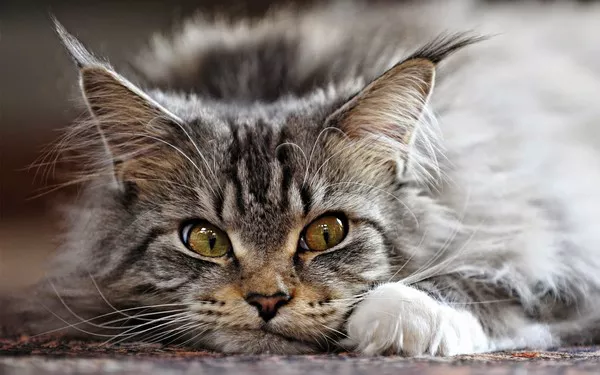In the world of feline enthusiasts, the Burmese cat stands out as a beloved breed known for its distinctive features, charming personality, and rich history. Identifying whether your feline companion is indeed a Burmese cat involves a keen understanding of their physical characteristics, behavioral traits, breed history, health considerations, and the availability of genetic testing. This article aims to provide a comprehensive exploration of these aspects to assist cat owners in discerning the unique attributes of Burmese cats.
Physical Characteristics:
Burmese cats are renowned for their striking appearance, characterized by distinct features that set Burmese cats apart from other breeds.
Coat Colors: One of the most prominent features of Burmese cats is their luxurious coat, which typically comes in four primary colors: sable, champagne, blue, and platinum. The sable coat is the most common and is a rich, dark brown, reminiscent of a sepia tone. Champagne exhibits a warm, golden hue, while blue showcases a soft, slate-gray coloration. Platinum, the rarest of the four, displays a shimmering, silvery-white coat. Regardless of the color variation, Burmese cats boast a satin-like texture to their fur, enhancing their allure.
Eye Shape and Color: The captivating eyes of Burmese cats contribute significantly to their charm. They have large, expressive eyes that are usually gold or yellow in color, complementing their coat beautifully. The shape of their eyes is often described as round and wide-set, lending an endearing and soulful gaze to their appearance.
Body Size and Shape: Burmese cats possess a muscular and compact body, exuding an elegant yet sturdy demeanor. They typically have medium-sized, rounded heads with distinct cheekbones. Their bodies are well-proportioned, with a graceful neck leading to a sleek torso and a moderately long, tapering tail.
Behavioral Traits:
Beyond their physical attributes, Burmese cats are known for their engaging personalities and distinctive behaviors that contribute to their identification.
Affectionate Nature: Burmese cats are renowned for their affectionate and sociable disposition. They thrive on human companionship and are often described as “velcro cats” due to their tendency to stick close to their owners. They enjoy being involved in household activities and are known to follow their human counterparts from room to room, seeking attention and affection.
Playful Demeanor: Despite their affectionate nature, Burmese cats retain a playful and mischievous streak well into adulthood. They are fond of interactive play and enjoy toys that stimulate their hunting instincts. Their energetic and curious nature often leads them to explore their surroundings with zeal, making them delightful companions for families and individuals alike.
Vocal Communication: Burmese cats are not shy about expressing themselves vocally. They are known for their soft, melodious voices and are adept at engaging in conversations with their human companions. Whether expressing their desires for food, attention, or play, Burmese cats communicate with a charming combination of purrs, trills, and meows.
Breed History:
The origins of the Burmese cat can be traced back to the temples of ancient Burma (now Myanmar), where they were revered as sacred companions to Buddhist monks. These esteemed felines were believed to possess mystical powers and were cherished for their loyal and affectionate nature.
The modern history of the Burmese cat began in the late 19th century when they were introduced to Western society. The breed gained popularity in the United States and Europe in the mid-20th century, thanks to the efforts of dedicated breeders who recognized their unique qualities.
In terms of breed development, Burmese cats are closely related to Siamese cats, with whom they share a common ancestry. However, they exhibit distinct differences in terms of coat color, body type, and temperament. Over the years, selective breeding efforts have refined the breed’s characteristics, resulting in the Burmese cat we know and love today.
Health Considerations:
While Burmese cats are generally robust and healthy, like all breeds, they may be prone to certain health issues that potential owners should be aware of.
Hypokalemia: Also known as “Burmese head defect,” this condition is characterized by a deficiency of potassium in the blood, which can lead to muscle weakness and tremors. While relatively rare, responsible breeders screen for this condition to minimize its occurrence in the breed.
Respiratory Issues: Burmese cats may be susceptible to respiratory conditions such as asthma and bronchial disease. Environmental factors, such as exposure to cigarette smoke or household allergens, can exacerbate these conditions.
Periodontal Disease: Like many breeds, Burmese cats are prone to dental problems such as gingivitis and periodontal disease. Regular dental care, including brushing and professional cleanings, is essential for maintaining their oral health.
Genetic Testing:
Advancements in genetic testing have made it easier than ever to confirm the breed ancestry of cats, including Burmese cats. DNA testing kits are readily available from reputable companies and can provide valuable insights into a cat’s genetic makeup.
The process typically involves collecting a sample of the cat’s saliva or cheek cells using a swab provided in the testing kit. The sample is then sent to a laboratory for analysis, where it is compared against a database of feline DNA profiles to identify breed ancestry.
Genetic testing can not only confirm whether a cat is indeed a Burmese but also provide information about potential health risks associated with the breed. This knowledge can be invaluable for cat owners and breeders alike, enabling them to make informed decisions about the care and management of their feline companions.
In conclusion, identifying whether a cat is a Burmese involves a combination of observing their physical characteristics, understanding their behavioral traits, appreciating their breed history, considering potential health considerations, and utilizing the available resources such as genetic testing. By delving into these aspects, cat owners can gain a deeper appreciation for the unique qualities of Burmese cats and forge stronger bonds with their beloved feline companions.
Related Topics:





















